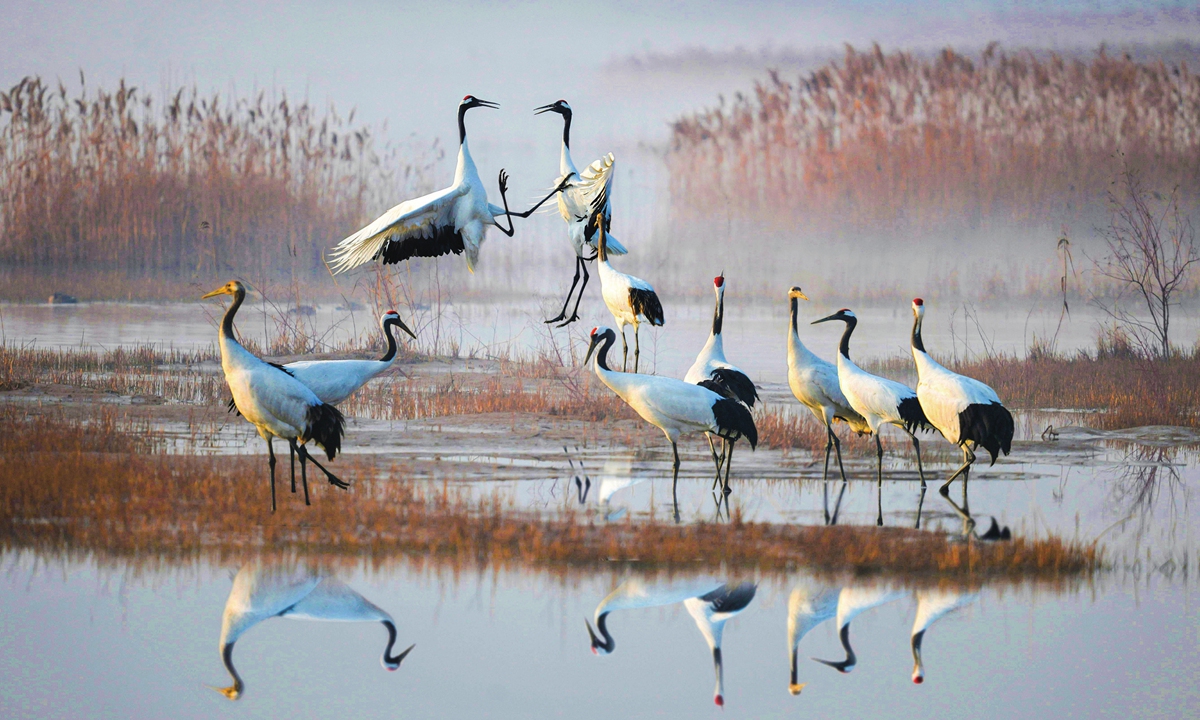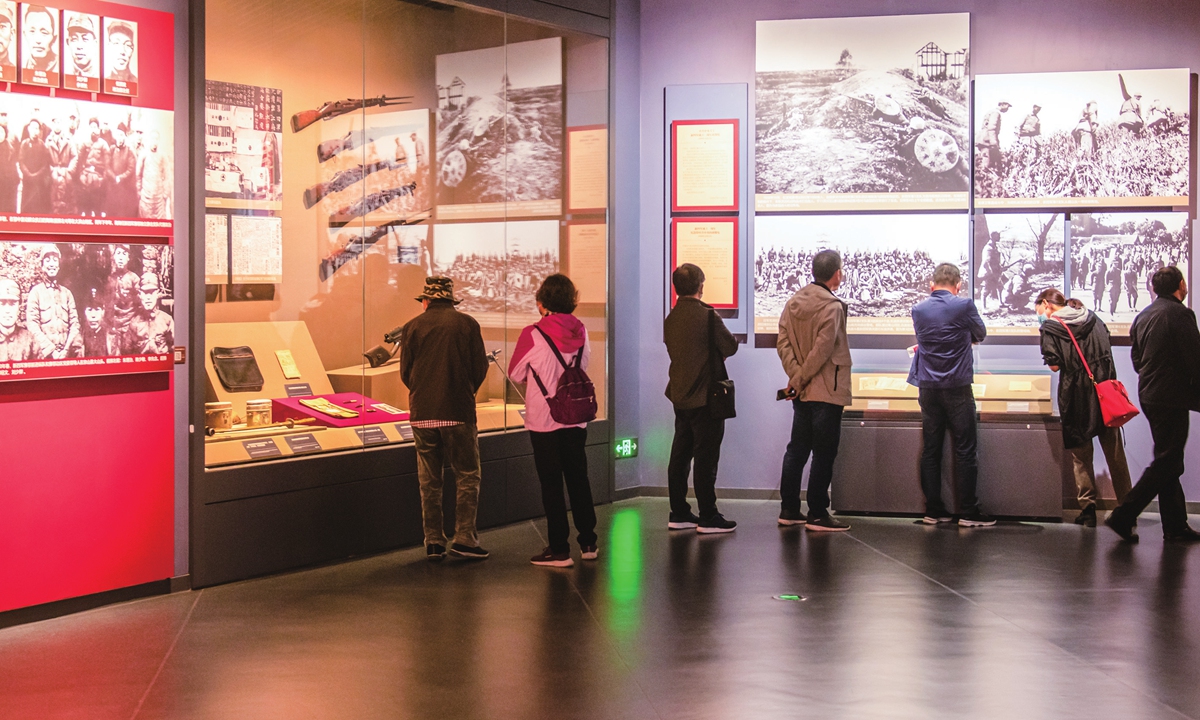
Red-crowned cranes in the wetland in Yancheng Photo: VCG

People visit the New Fourth Army Memorial Hall in Yancheng, East China's Jiangsu Province.Photo: VCG
During his journey from Shanghai to Beijing on December 3, Chinese President Xi Jinping visited the New Fourth Army Memorial Hall in Yancheng, East China's Jiangsu Province. During this visit, Xi gave an encouraging speech, reminding the public of that beautiful land of fish and rice embraced by the Yellow Sea in eastern China.
In January 1941, about three months after the outbreak of the Southern Anhui Incident, the Central Military Commission of the Communist Party of China (CPC) issued the order to rebuild the headquarters of the New Fourth Army. Five days later, the headquarters were rebuilt in Yancheng, marking the army's independent and autonomous assumption of the important task of the anti-Japanese war in the enemy-occupied areas of Central China under the leadership of the CPC. Yancheng thus became the political, military and cultural command center of the anti-Japanese war in Central China during that hard period.
Deep-rooted 'red gene'
Located on Jianjun East Road in Yancheng, the New Fourth Army Memorial Hall was completed in 1986 and has been opened to the public since October that year. This is the only comprehensive memorial hall in the country that fully reflects the history of the New Fourth Army.
The main building of the museum is designed in the shape of the Chinese character four, with the "N4A" - the English abbreviation for the New Fourth Army - emblem embedded above the main entrance.
On the east and west sides of the main building, there are two granite bas-reliefs in the shape of flags, depicting historical scenes of the reconstruction of the New Fourth Army military headquarters.
According to the website of the hall, there are more than 10,000 items of New Fourth Army's anti-Japanese war relics and historical materials displayed in the hall, showcasing the glorious history of the New Fourth Army's rebirth and the bloody struggle in seven sections of the exhibition that occupies a total area of more than 9,000 square meters.
The historic items displayed in the hall include Chen Yi's document box, Liu Shaoqi's desk and letters between the army leaders. Each precious item in the collection reproduces the remarkable history of Yancheng as the location of the New Fourth Army's rebuilt headquarters, where the military and civilians fought together with great determination and hardship.
What attracted Xi the most is the exhibition on the New Fourth Army Anthem, which represents hundreds of songs dedicated to the army. These songs were once the musical weapons that rallied the masses and boosted morale, as well as vivid testimonies of the revolutionary spirit of the New Fourth Army soldiers.
A unique worldAlthough not as famous as Nanjing and Suzhou, Yancheng is in fact the largest prefecture-level city in Jiangsu and the only city in China without mountains.
Besides the deep-rooted "red gene," the city also boasts rich natural and cultural resources, including the longest coastline, the largest coastal tidal flat and the widest sea area in the province. It is a treasure city that integrates wetlands, forests and the ocean known as the Oriental Wetland and the City of a Hundred Rivers.
Having a coastline of 582 kilometers and 769,700 hectares of wetlands, Yancheng is a vital wintering ground for migrating birds. Every year, over three million birds come here to spend the winter, so that the city is dubbed "an international airport for birds."
The city is the only prefecture-level city in China to boast two national wetland nature reserves, two wetlands of international importance as well as a world natural heritage site.
In the Jiangsu Yancheng Wetland Rare Birds National Nature Reserve, approximately 400 to 600 wild red-crowned cranes choose to spend their winter from November to March of the following year, making it the largest wintering ground for red-crowned cranes in the world.
In the Dafeng Elk National Nature Reserve, the number of elks living there has increased from less than 100 to 7,000 in the past three decades, accounting for more than 70 percent of all elks living in the world.
The land of fish and rice will not disappoint food lovers, given the overwhelming variety of local delicacies such as fish soup noodles in Dongtai county, lotus root powder dumplings in Jianhu county and braised goose.
Many visitors agree that Yancheng integrates natural and cultural heritage. Many people neglected it before, but as the saying goes, "a bright pearl is doomed to shine," eventually the beauty of Yancheng will be recognized by more and more people.
URL: https://www.seeglobalnews.com/read-2805.html